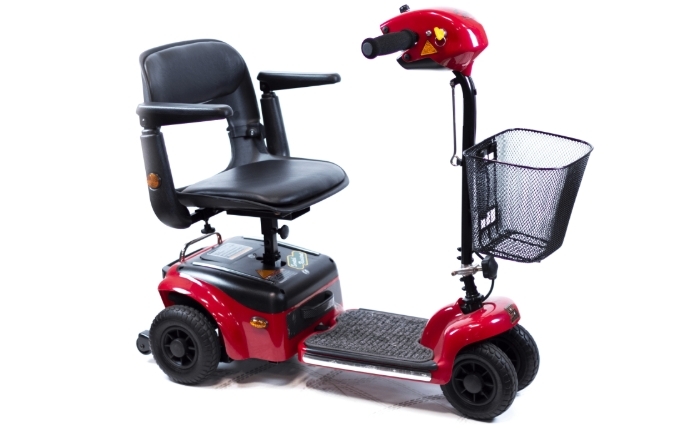Things To Consider When Buying a Used Mobility Scooter

Mobility scooters offer older adults with mobility issues the freedom to explore places, like parks, malls, and their neighborhoods, enhancing their quality of life. Despite this, some seniors refuse to use one as they associate them with aging and decline. However, modern units are sleek and equipped with features such as comfortable padded seats, storage, and bright headlights.
New mobility scooters can be costly, ranging from $800 to $6,000. But there are alternatives to getting one for yourself or an elderly family member. Affordable used models are available through online marketplaces, local medical supply stores, and mobility scooter dealers. When shopping for one, it’s essential to know what features to look for and the right questions to ask to ensure you find a suitable model.
Environment
Begin by thinking about the primary use of your equipment and the places where you’ll be riding it. If you’re looking for a mobility scooter to navigate through shopping centers or around your residential community, opt for a lighter, more compact model that’s easy to disassemble. However, if you’re planning to use it on neighborhood sidewalks or along trails in the park, a larger, more durable model built for outdoor activities will serve you better.
Where to Purchase
Individual Seller
Buying a used scooter from a private individual can be more affordable. However, it requires trusting the seller’s honesty about the equipment’s history and condition.
Dealership or Medical Supply Store
A pre-owned mobility scooter from a dealership or a medical supply store might come at a slightly higher price, yet it comes with its benefits. For starters, you have the opportunity to consult with experienced professionals. This can provide a greater sense of assurance when buying from a reputable business, as opposed to an unknown individual.
Furthermore, dealerships often offer high-quality pre-owned scooters, which might have been rentals or were barely used.
Equipment History
Often, after an older adult passes away, their family might decide to sell their medical equipment. When purchasing directly from an individual, it’s crucial to gather as much detail as you can about the following:
- The frequency of charging the scooter
- The approach taken towards its upkeep
- The original purchase date
- The types of environments the device was used in—whether indoors, outdoors, or on uneven terrain
- The storage conditions of the equipment when it was not in use
Maintenance Records
Mobility scooters typically do not include maintenance histories. However, individual sellers might keep such records. These documents can reveal the replacement of any components and the date of battery changes. Owners might also hold onto receipts or maintain a personal record to track any services that were performed.
General Condition
This factor can be gauged by how stable the unit is during a test drive. When taking a used mobility scooter for a spin, ensure that the ride is smooth without any sudden stops or starts, which could indicate issues with the wiring.
Battery
Typically, batteries need replacing every two to three years. A battery that’s only a year old may have plenty of life left. Still, if the scooter has been idle for an extended period, its condition could be compromised. This is critical to keep in mind since the cost of batteries for mobility scooters ranges from $55 to over $100, and they usually need to be purchased in pairs.
A telltale sign that a battery is nearing its end is if it requires charging twice within a single day. When purchasing from an individual, it’s wise to ask when the battery was last replaced or inspected. Note that batteries can prematurely fail if they’re not charged according to the guidelines specified in the manual.
Tires
Examine the tires closely to determine their wear level. Additionally, taking the scooter on a test drive can offer insights into their condition. Many mobility scooters are equipped with durable tires. Should it remain unused in a garage for a year, the tires might get flattened on one side due to the scooter’s weight. If you notice any bumps during your test drive, it indicates the equipment has been stationary for too long.
Cosmetics
Inspect the unit for any physical imperfections, like tears in the seat or marks on the plastic surfaces. This evaluation will help verify the extent of its usage.
Parts and Accessories
Repairing components like motors, tires, or electrical wiring can be challenging if the parts are for older models or have been discontinued by the manufacturer. Typically, suppliers stock parts for 10 to 15 years post-discontinuation.
It’s also essential to be cautious when purchasing from abroad. People often buy medical equipment from overseas and transport it back home, only to find that the necessary parts for maintenance or repair are not available locally.
Remaining Warranties
Warranties typically do not apply to pre-owned equipment. These guarantees are intended for the original buyer only. Therefore, a second-hand unit is sold “as is.” While some mobility scooter dealers might provide extended warranties, such offers are relatively rare.
Ready to Enhance Your Mobility?
Buying a used mobility scooter involves careful consideration of various factors such as equipment history, tire wear, and general condition. By understanding these aspects, you can make an informed decision that ensures safety, reliability, and value for your investment.
Reach out to a trusted mobility scooter dealer who can guide you through the selection process, offering expert advice and peace of mind. Whether you’re aiming for more accessibility around your home or seeking adventures outside, the right scooter awaits you to make every journey comfortable and safe.
